Introduction
- The challenging nature of the current business environment exposes managers to situations where they have to deal with internal and external forces;
- External forces include market competition, the changing customers’ demands, inflation, and government policies;
- Internal forces include employee management, operational management, and policy implementation;
- Machine learning may help in solving the above management problems;
- This study argues that machines can be used to improve employee engagement and ultimately the performance of an organization.
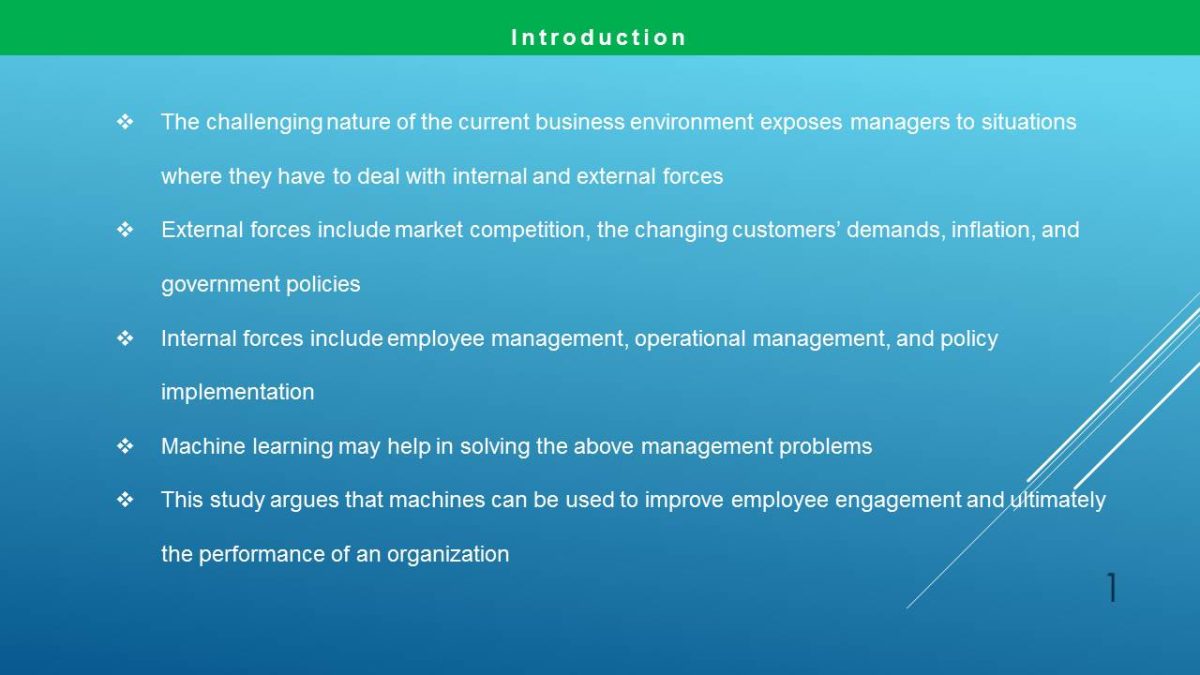
Rationale for the Study
- The current competitive business environment does not expect companies to make constant mistakes;
- Perfection is key when it comes to managing internal and external challenges;
- Managers have to handle very demanding employees with care to ensure that they do not consider moving to other companies;
- Using information technology makes it easy to understand areas of improvement that each employee needs;
- Machines are becoming superior management tools that go beyond human beings’ capabilities;
- They make managers’ work simple and more accurate in the current challenging business environment.
This research is very important since it will explain how modern-day managers can increase their reliance on information technology to enhance their managerial functions. It will explain the new role of managers in an environment where technology has become a critical component of management.
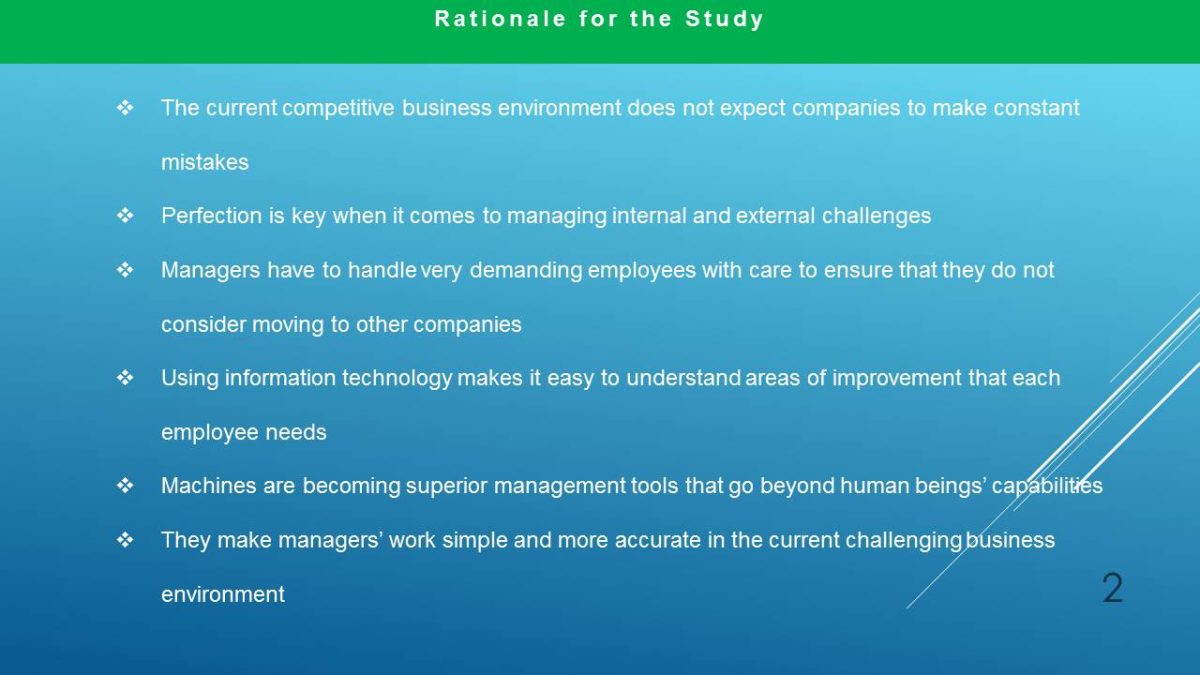
Machine Learning
- The alongside diagram shows the extent to which machines will operate with no supervision.
- They will use advanced algorithms to extract the appropriate data from a huge volume.
- The derived data will help to make critical decisions within a span of seconds.
Machine learning will enable managers to understand their current business environments and accurately predict the future in a way that will enhance the success of their respective organizations.
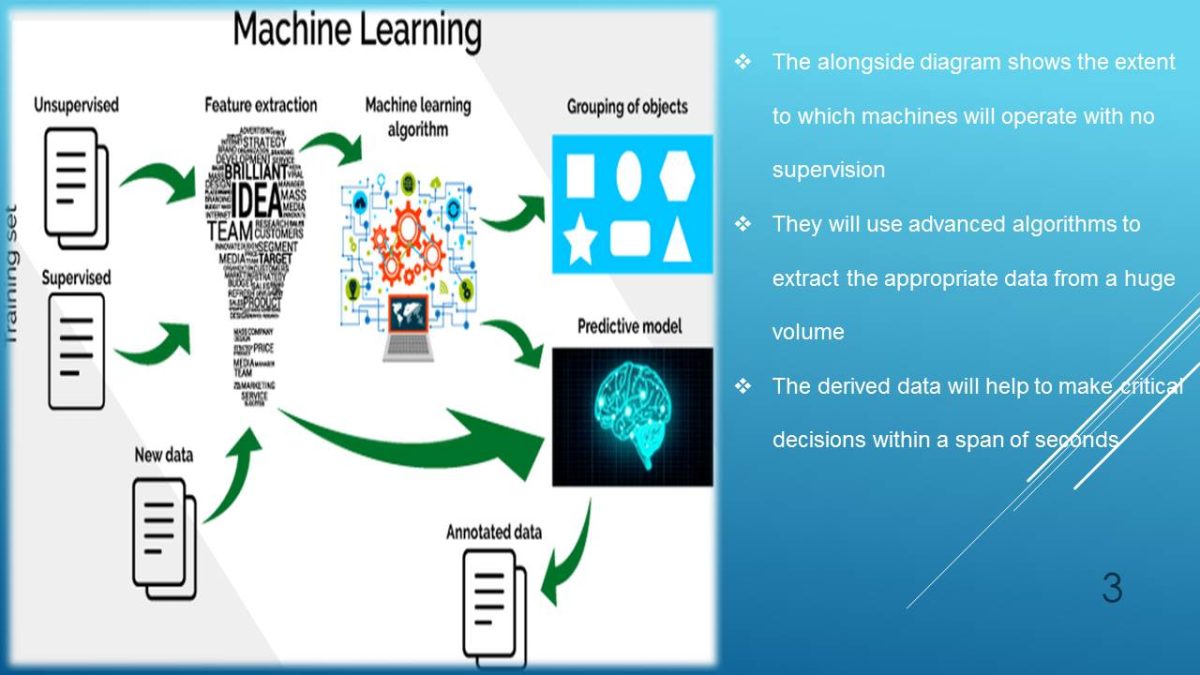
Research Questions
This study seeks to respond to the following questions:
- What are the main challenges that managers face in coordinating and controlling employees’ activities?
- How can companies use the concept of machine learning to improve employee engagement, performance, and motivation?
- How can managers use machine learning to improve their performance?
When conducting research, it is important to focus on the goals that must be achieved by the end of the study. Coming up with clear research questions makes it possible to define the research focus. It acts as a constant reminder to the researcher about the data that should be collected and analyzed. It also eliminates cases where a researcher may collect massive amounts of data partially related or completely unrelated to the research topic.
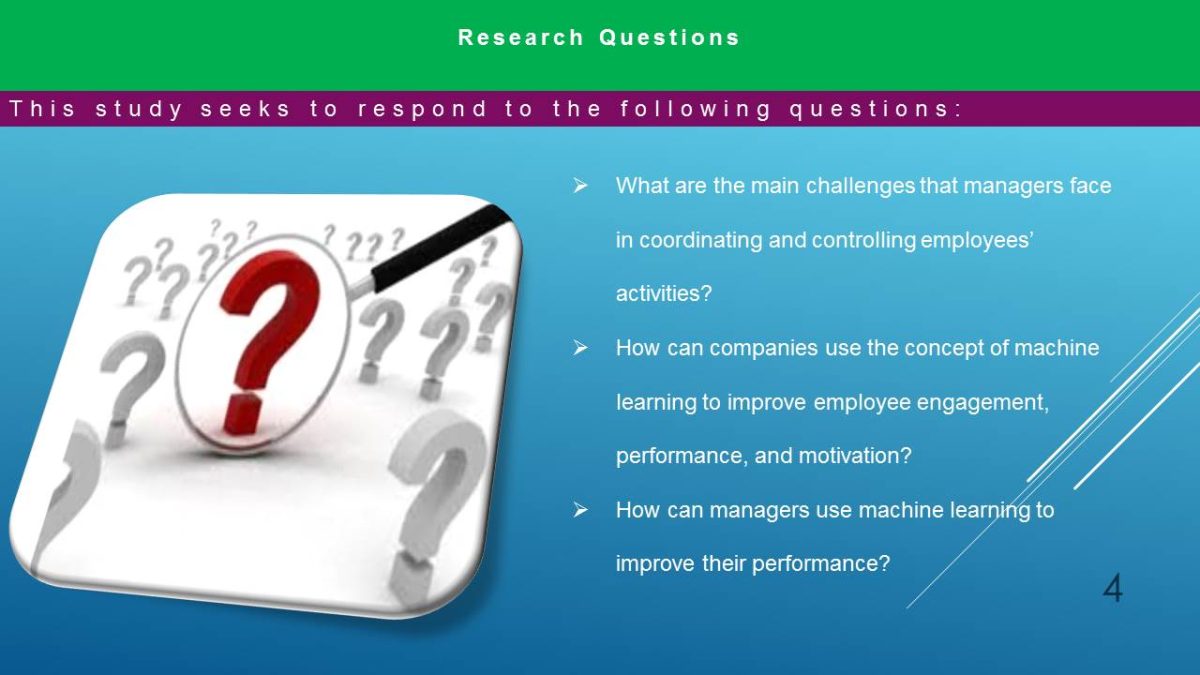
Background to Theory and Hypothesis
- Employees play a very critical role in an organization, especially helping to attain the set goals;
- The top management formulates strategic goals and objectives;
- Mid-managers translate them into actionable goals to be assigned to employees;
- Companies are struggling to manage stiff competition because of the liberalized global market;
- Organizations are finding it necessary to improve their operational strategies as a customer retention strategy;
- Efficiency and quality product delivery help businesses to achieve sustainability in such challenging business environment;
- Managers should streamline employees’ skills to match the prevailing job requirements.
Customers understand that they have several options to choose from whenever they want to purchase a given product. As clients become more demanding than they were before, firms find it necessary to improve their operational strategies. Otherwise, they risk losing their potential clients to their competitors. Employees must remain regularly motivated to improve their level of performance. This situation explains why the role of employee management has become a critical area that leaders must take seriously.
- Managers find it difficult maintaining their employees constantly motivated;
- Employees’ diversity is a major cause of the above problem in the workplace environment;
- Managers cannot constantly give their workers personalized attention, owing to employees’ unique needs;
- Such problems have prompted the need for using technology to improve organizational performance;
- Big data, artificial intelligence, and machine learning technologies may help to solve the issues;
- Machines are not meant to replace managers, but only take over the role of decision-making;
- Many organizational decisions are based on data that has to be processed and interrelated;
- Machines make it possible to know the most desirable option based on the organizational goals and the prevailing forces, hence enhancing efficiency.
Factors that may be motivating to a section of the employees may not be the same as those preferable to the other section. Satisfying the generation Y and millennial employees is posing another serious challenge to the current managers. These employees are very demanding and do not hesitate to move from one organization to the other at the slightest provocation. It means that a firm may invest heavily on training an employee only for him or her to move to another organization with the new skills learned. Developments made in the field of information technology have improved data collection, processing, storing, and sharing whenever it is necessary. Such technologies improve efficiency in decision-making, especially when one is presented with statistics that may influence the future of a firm.
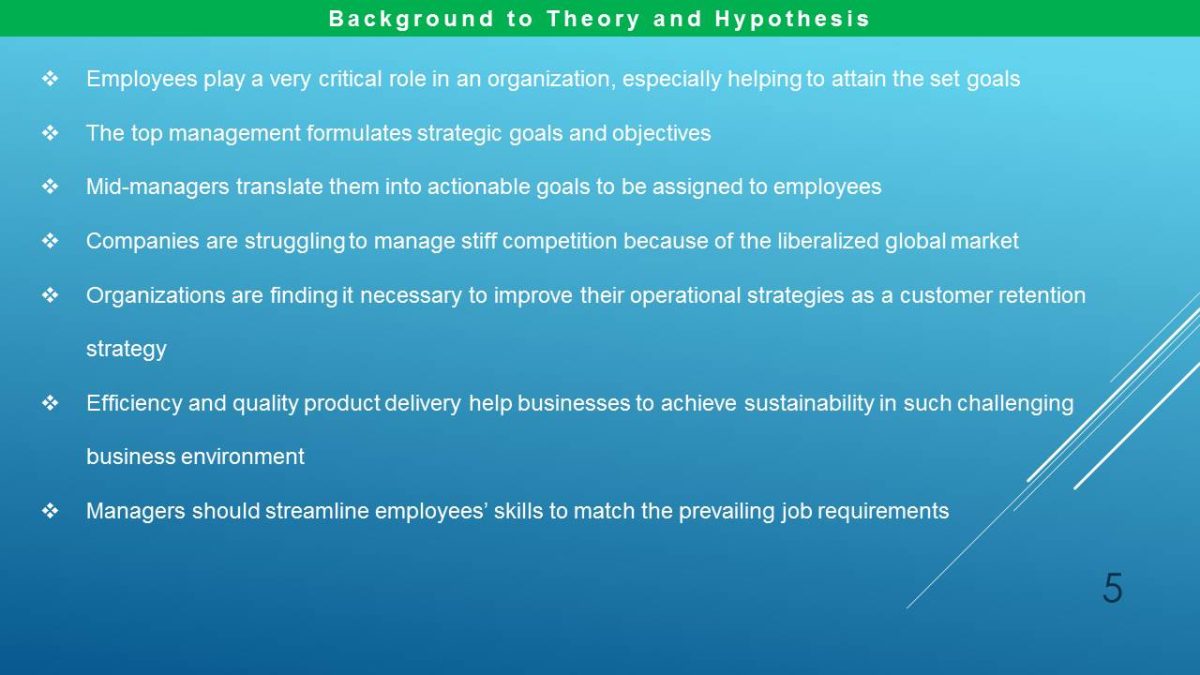
Literature Review
Understanding the Concept of Big Data
- The responsibility of managers is increasingly becoming complex in modern organizations (Sugiyama & Kawanabe, 2012);
- Machine learning can take some of the managers’ responsibilities, for instance, making decisions about the future based on large data;
- Big data denotes multifaceted and huge records that cannot be managed using conventional data handling tools (Marsland, 2015);
- Data can be classified based on three premises, namely, its volume, variety, and velocity;
- In terms of volume, Abu Dhabi National Oil (ADNOC) has over 25,000 employees whose activities must be monitored on a daily basis;
- It may be impossible to collect, analyze, and manage data from such a number of workers.
Looking at what scholars have found out in this topic will help in identifying research gaps and coming up with hypotheses, which can be analyzed using primary data collected from the field. The collection of such data will need a digital system that is computerized to capture performance based on the set goals and objectives. Managers who are exposed to voluminous information to handle need assistance to summarize the daily and monthly performance of each of their employees in a digital format. It is only through this approach that it will be possible to have an accurate understanding of the performance of these employees. At this point, managers will have a clear picture of any underperforming employees. A decision can be made on what needs to be done to address the weaknesses.
- In terms of variety, General Electric and Samsung also receive a wide variety of data daily from their numerous industries across the world;
- The company’s top management unit has to make decisions about the wide variety of data presented to it (Cleophas & Zwinderman, 2015);
- Managers have to process information about employees, customers, shareholders, and strategic partners;
- They also need to manage competitors, suppliers, government agencies, environmental watch groups, or any other relevant party’s information;
- It is impossible to process such a variety of data and make decisions within this short period.
- The digital technology platform helps managers to have such data processed within a short time (Zhang & Ma, 2012)
By stating the possible choices that have to be made, managers will only need the digital technology to predict the consequences of each action plan. It makes it possible to know the most appropriate approach that should be taken within such a short period.
- In terms of velocity, ADNOC has to constantly deal with various issues, for instance, customers’ requests, in its many departments;
- It is impractical, even when dealing with the most effective manager, to deliver the expected outcome without the help of technology;
- Information technology can help to process such data;
- It can give the necessary directives on how decisions should be made to address the concerns raised;
- Efficiency and effectiveness cannot be ignored when handling customers’ needs (Bell, 2015);
- The speed of handling customers’ issues determines their loyalty levels;
- The response should be in line with customers’ expectations for them to see that their needs are addressed (Marsland, 2015).
It is the responsibility of the sales department to ensure that information coming from clients is processed and acted upon within the shortest time possible. The information may be about changes in an order, complaints about previous orders that need to be addressed, order cancellation, the creation of a new order, the existence of a new product in the market that is affecting the sales of the company’s product, or any other relevant information. The sales manager must process and act upon that set of information streaming in at a high speed within the expected time. It is not possible, even when dealing with the most effective manager, to deliver the expected outcome without the help of technology.
Machine Learning in Management
- Machine learning entails giving machines data access for them to learn by themselves;
- Greater freedom is granted to the machines in allowing them to undertake tasks that should be done by human beings;
- Machine learning emphasizes the need not to teach computers everything that they need to do;
- Instead, machines are coded in a way that they can think and act like a human when offered access to information that would inform their decisions (Sjardin, Massaron, & Boschetti, 2016);
- Machines form an alternative for addressing the weaknesses of people;
- Every stakeholder is aware that the set decision standards must be met strictly machines favor no one (Zhang & Ma, 2012).
When an organization has a system where underperformers have to be eliminated, it will be clear to everyone who should be sent home. Such machines eliminate blame games when an employee is laid off against other people’s wish. Before embracing such a people management system, everyone should be informed about the new assessment approach and the standards expected of everyone. At the end of the set period, every employee will see the performance record and the suggestions about his or her position in the firm made by the machine.

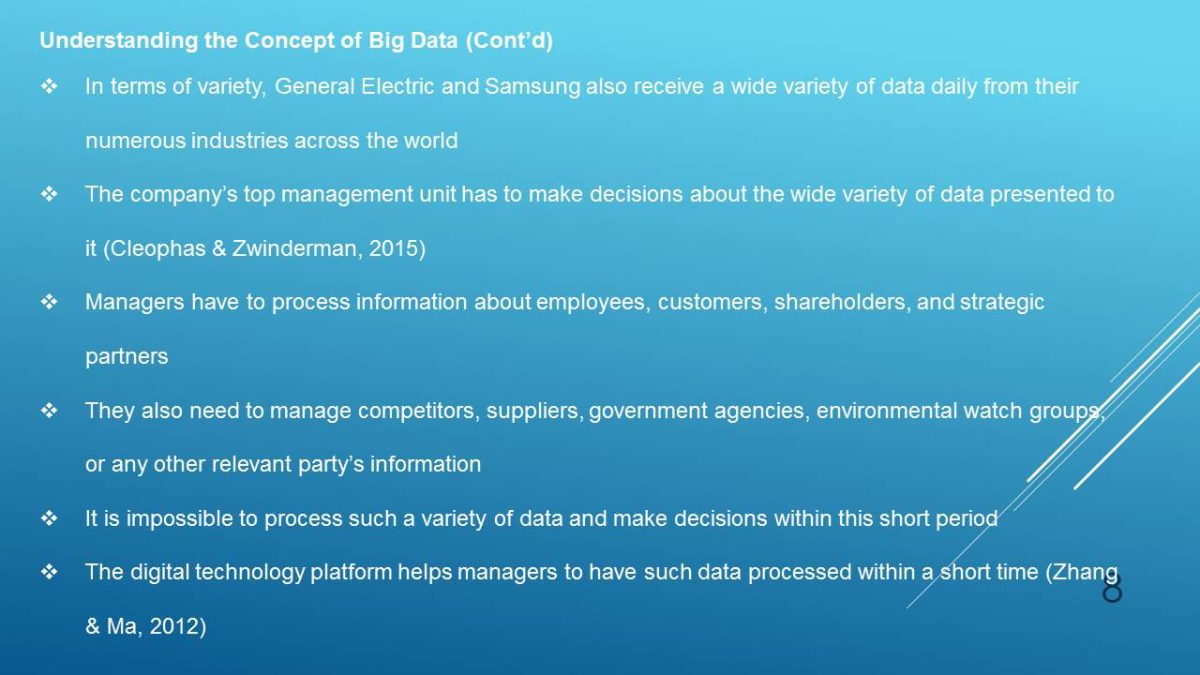

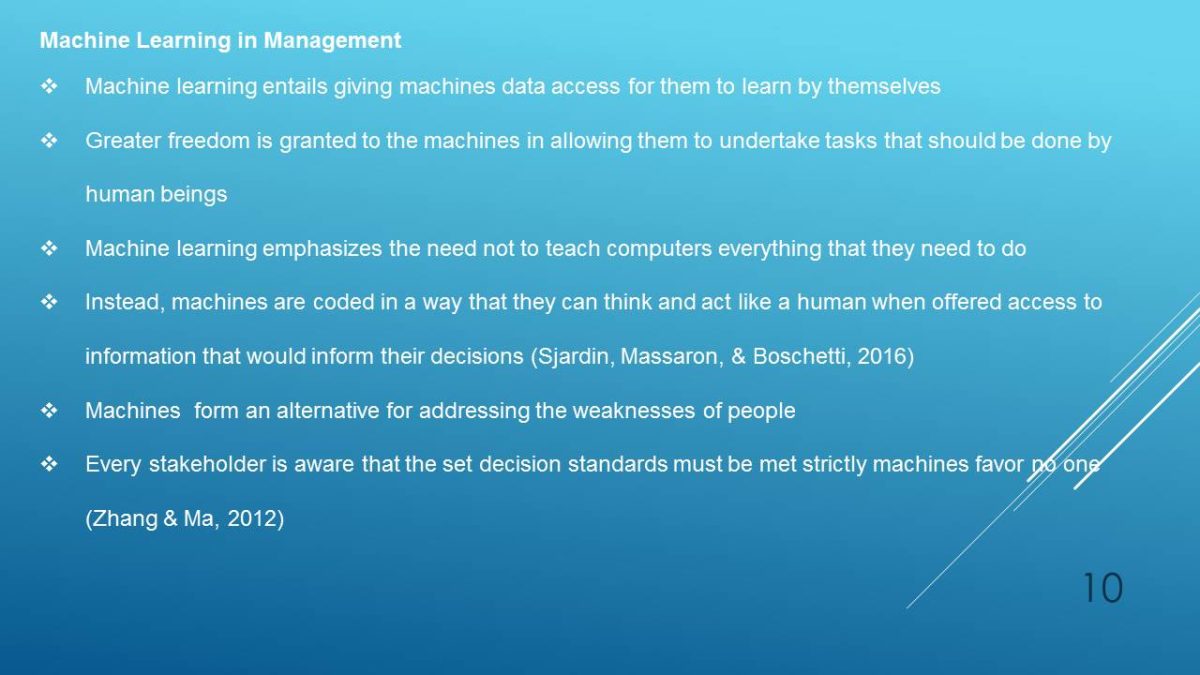
Hypothesis
- Machine learning and big data offer a bright future to the field of management (Bell, 2015);
- Machines will replace people in the decision-making process if the concept of machine learning is fully embraced;
- They will eliminate corruption, favoritism, excessive compassion, and fear when it comes to making critical decisions;
- Machine learning and artificial intelligence will help to eliminate the above human weaknesses.
Hence, this study hypothesizes that:
- H1. The use of machine learning and big data is a solution to improve company’s performance by monitoring, analyzing, and readjusting efforts for employee engagement.
Currently, people are reluctant to embrace this new concept because it is not properly understood. It is also yet to receive maximum support in many organizations because of the fear that it may replace people in the role of management. Power can be very addictive. In fact, once one gains it, there is always the desire to retain it at all costs. Hence, firms that continue to resist this new concept may find themselves struggling to achieve success in the market.
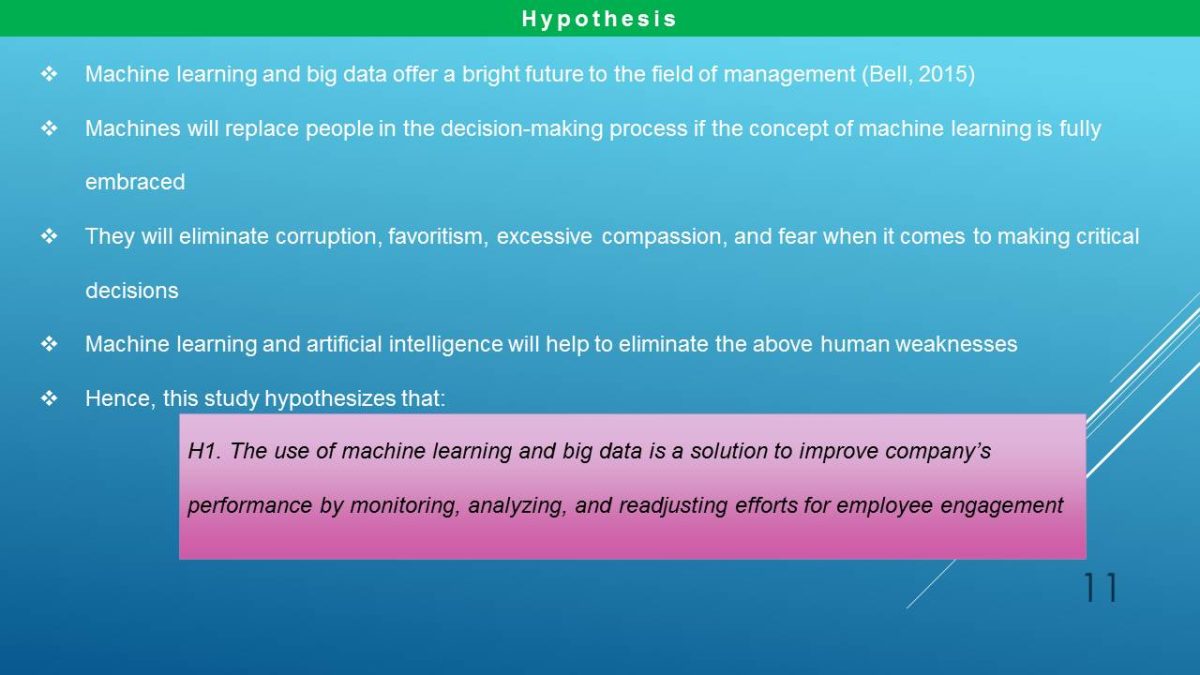
Methods
Research Design
- The researcher chose to use both primary and secondary data;
- Primary data was collected from a sample of 100 respondents through a survey;
- Statistical and qualitative analyses were adopted in the research;
- Findings were presented in charts and graphs.
Sample and Data Sources
- A sample of 100 participants was selected through simple random sampling;
- Respondents were selected based on their willingness to be part of the study, their availability, and their knowledge of the concept of machine learning;
- After sampling the respondents, the researcher used online survey to collect data from them;
- Online survey was appropriate based on the limited time of completing the research project.
The researcher collected data from two main sources. Secondary sources of data were very important in providing background information and focus for the research. Secondary data came from books, journal articles, and reliable online sources. They formed the basis of literature review and informed the research hypothesis. Primary data was collected from sampled respondents. It helped in answering the research questions and confirming the hypothesis.
Procedure
- The researcher phone-called the individuals believed to have the needed knowledge about machine learning;
- The researcher explained the participants’ role in the study and the project’s significance;
- Respondents had the liberty of withdrawing from the study in case they considered it necessary (Murphy, 2012);
- The researcher e-mailed the questionnaires to the respondents;
- They were to e-mail back the filled questionnaire.
Measure
- The independent variable was the use of machine learning;
- The dependent variable was people management role in an organizational context.
The focus is to measure how machine learning (the independent variable) can affect people management (dependent variable) within an organization. By using statistical methods, it will be possible to quantify the relationship. The researcher will be able to explain the level of relationship between these variables. If it is determined that a close relationship between these variables exists, then the study will have confirmed the set hypothesis.

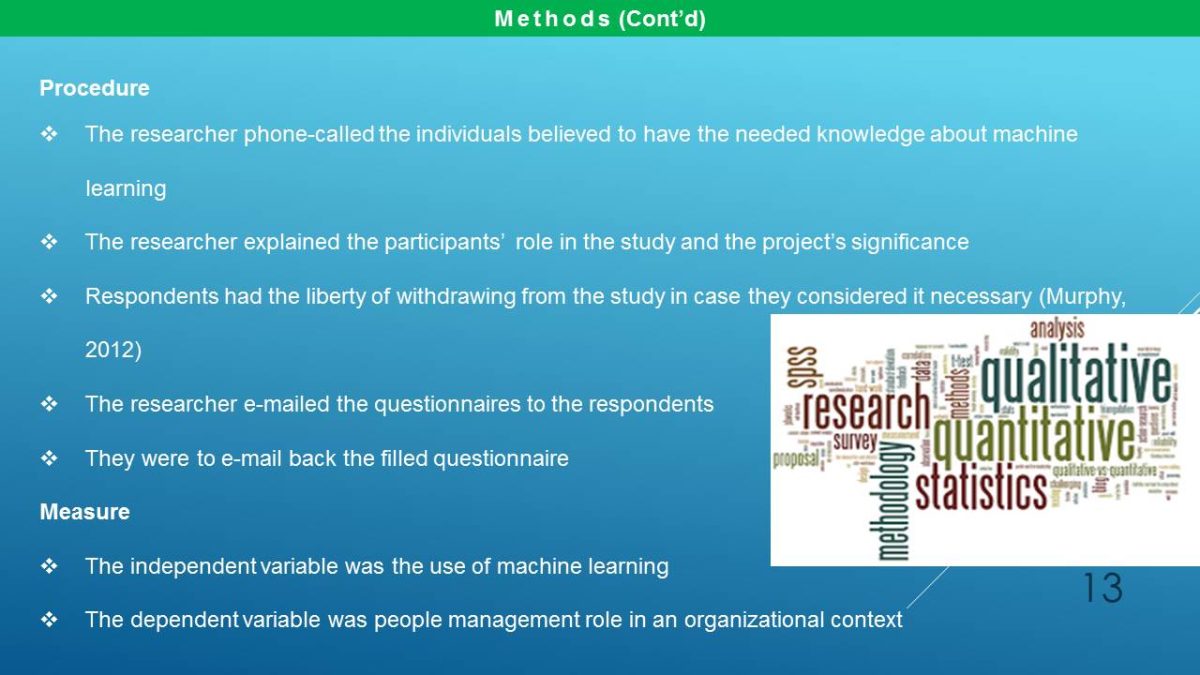
Analysis and Results
- Based on the responses, favoritism (28%) is one of the biggest challenges that managers have to deal with in their organizations;
- 70% of the respondents agreed that machine learning could improve employee engagement, performance, and motivation;
- 90% of the respondents agreed that machine learning could improve the performance of the managers;
- 94% of the respondents believe that machine learning and big data can improve a company’s performance.
The questions that were set will be answered in this section based on the primary data. The hypothesis will also be tested to determine if the respondents believe that machine learning and big data can be used to improve a company’s performance by monitoring, analyzing, and readjusting efforts for employee engagement. Machine learning improves the process of monitoring, analyzing, and readjusting employee engagement efforts. The responses confirm the validity of the set hypothesis.
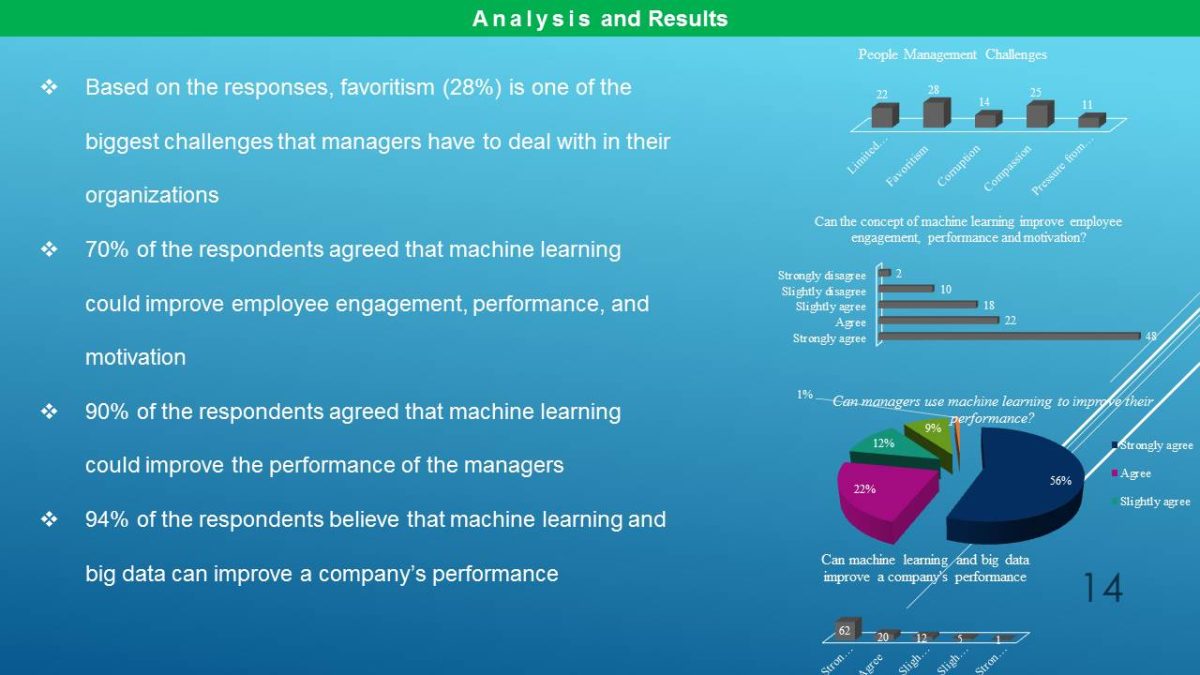
Case Study: Machine Learning at General Electric
- General Electric Company has highly diversified its product portfolio, operating in several industries;
- Managing hundreds of thousands of people and coordinating all operational activities in this company is a very complex process;
- The management adopted digital technologies to improve managers and employees’ performance;
- Machine learning was successfully adopted to help in supplier and client data management;
- The move has significantly improved GE’s performance.
GE’s top management unit realized that the large size of the company and its diversification into many industries could not be a justification to underperform. As such, it has been working on ways of improving the performance of its managers and that of the firm. In the early 2017, the company’s chief executive officer announced the commitment of GE’s top management to embracing digital transformation. It was announced that the management was keen on building a digital organization to improve the performance of its managers and employees.
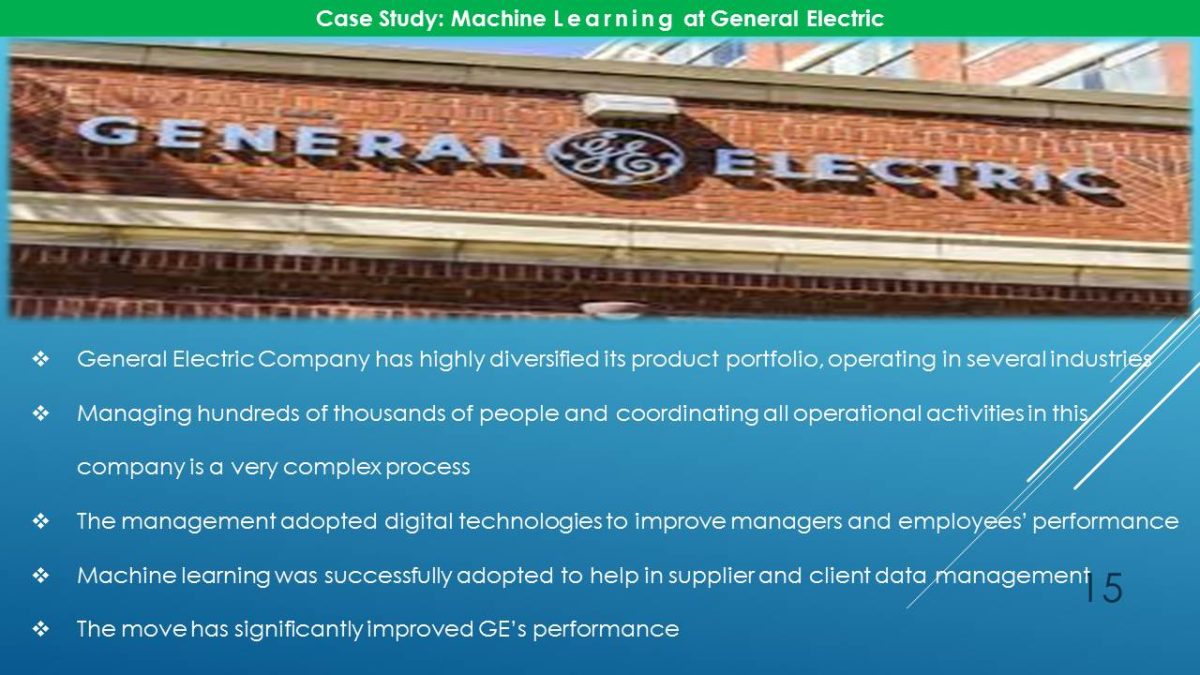
Discussion and Study Limitations
- Advancement in the field of information technology has created a platform where machines can learn and display intelligence;
- Machines have been empowered to monitor the immediate environment, collect the relevant data, process it, and act upon it within the desirable time;
- From the study findings, conventional theories of management such as McGregor’s Theory X and Y may not be suitable anymore in the modern business environment;
- Using artificial intelligence, a manager can analyze the suitability or productivity of employees within a short time;
- Limitations included the inability to get data from top UAE companies’ managers and the lack of face-to-face interviews.
The fact that machines are not living beings makes it impossible for them to make rational decisions. They lack compassion to act in a manner similar to that of a human being. The primary and secondary data demonstrates that machine learning is a critical tool that cannot be ignored in the modern business environment. Machines eliminate mistakes by presenting a detailed analysis of the key issues, which are of interest to the firm.
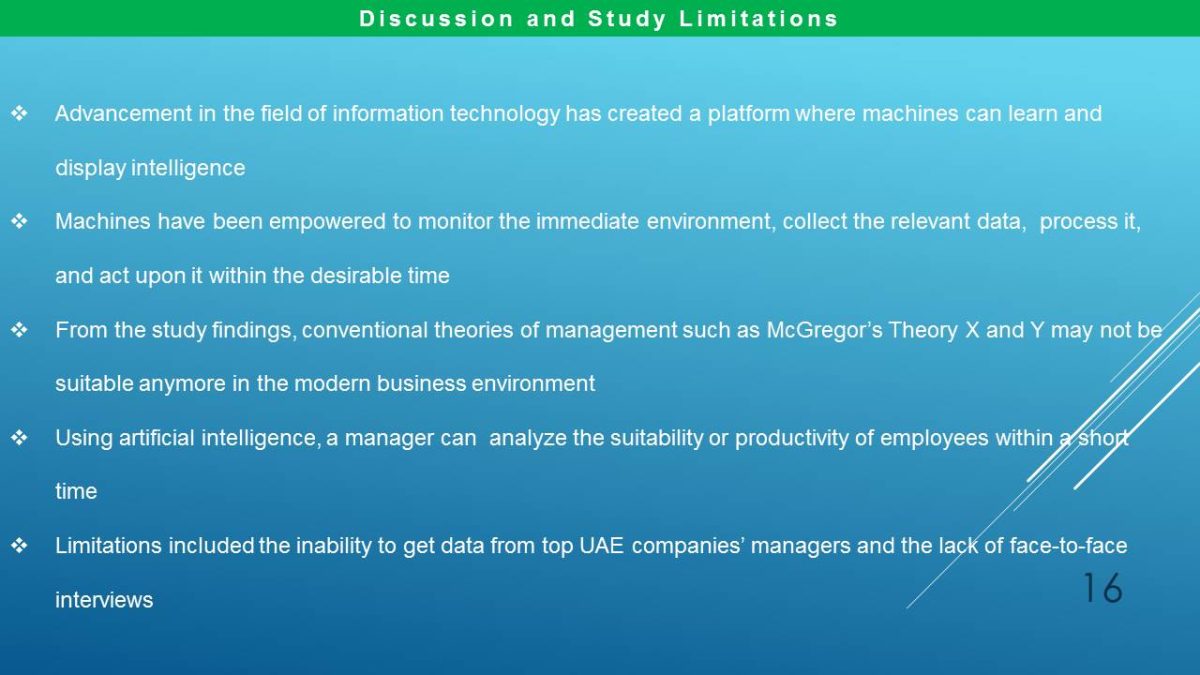
References
Bell, J. (2015). Machine learning: Hands-on for developers and technical professionals. Hoboken, NJ: John Wiley & Sons, Inc.
Cleophas, M., & Zwinderman, A. (2015). Machine learning in medicine: A complete overview. Cambridge, MA: MIT Press.
Marsland, S. (2015). Machine learning: An algorithmic perspective. New York, NY: Taylor & Francis Group.
Murphy, K. P. (2012). Machine learning: A probabilistic perspective. Cambridge, MA: MIT Press.
Sjardin, B., Massaron, L., & Boschetti, A. (2016). Large-scale machine learning with python: Learn to build powerful machine learning models quickly and deploy large-scale predictive applications. Birmingham, UK: Packt Publishing Ltd.
Sugiyama, M., & Kawanabe, M. (2012). Machine learning in non-stationary environments: Introduction to covariate shift adaptation. Cambridge, MA: MIT Press.
Zhang, C., & Ma, Y. (2012). Ensemble machine learning: Methods and applications. New York, NY: Springer.